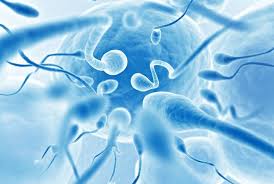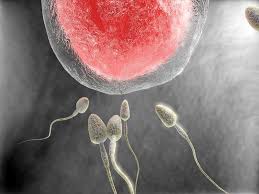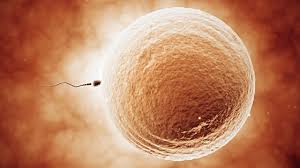In the mid-17th century, when natural philosophers barely saw women's eggs with their naked eyes, they believed that life was created by God: one person existed in another's eggs, just like a Russian doll. This view is called the preformation.

One might think that with the progress of science, a precise microscope would crush the Russian doll theory. On the contrary, when microscopes allow researchers to see not only eggs but also sperm, preformation evolves into a new and even more patriarchal political ego: some reproductive scientists and students believe that eggs are just passive containers, waiting for active sperm to trigger fertility. Each sperm has a tiny, pre-formed human in its head.
Mass and scientific media often portray human reproduction as a massive marathon: the fastest and strongest sperm wins the prize of fertilizing eggs. It would be bad enough if such narratives were merely the legacy of our sexist past, a disgusting male fantasy based on wrong science. Even worse, biased information prevented men and women from receiving significant reproductive system diseases treatment.
Myth 1: High sperm count is to cope with multi-male competition
Powerful microscopes show that the average human ejaculation (about half a teaspoon) contains about 250 million sperm. In fact, studies have shown that when men have less than 100 million sperm, pregnancy rates drop. Obviously, half of the sperm ejaculated at a time is needed for normal reproduction. Oligozoospermia or necrospermia are usually caused by reproductive infection. These diseases can be effectively cured by active treatment, such as taking Diuretic and Anti-inflammatory Pill. Once the infection factors are eliminated, the number of sperm will return to the average level.
One explanation accepted by most people is sperm competition. But in several rarely cited papers published more than 40 years ago, biologist Jack Cohen of the University of Birmingham found that the number of sperm increased with the number of crosses in the process of sperm production in various species. Cross-over adds variation - the primary material of natural selection. Sperm production can be seen as a lottery draw, printing enough lottery tickets (sperm) to match the available numbers (different genome combinations).

Myth 2: Sperms swim all the way
Other findings are also contrary to this popular opinion. Studies have confirmed that human sperm has been transported a considerable distance passively and driftly through the uterus and fallopian tube. Surprisingly, sperm size tends to be inversely proportional to body size in mammals, and sperm in mice is longer than sperm in whales. Perhaps mouse sperm can swim all the way to the egg by itself, but whale sperm cannot swim 100 times longer than the female reproductive tract without other help.
In fact, only a few hundred of the 250 million sperm ejaculated by humans can reach the fertilization site high in the fallopian tube. The process of a sperm passing through the female genital tract is more like a challenging training course for military obstacles than a standard short-distance swimming competition.
As sperm moves upwards, the number decreases, and less than one in a million sperm surrounds the egg during fertilization. Any sperm with physiological abnormalities will gradually disappear, and the survivors around the eggs are complete random sperm.
Myth 3: Female reproductive tract receives sperm passively
Many sperms can't even reach the cervix. The acidic environment in the vagina prevents sperm from surviving there for a long time. When passing through the cervix, many sperms escaping from the vagina get stuck in mucus. The defective sperm will be trapped. In addition, thousands of sperm move into a side channel called a crypt, where they can be stored for several days.

If the number of sperm surrounding the egg is too much, the risk of fertilization by more than one sperm (polyfertilization) will increase. Polyfertilization occasionally occurs in humans, especially when fathers have too much sperm. The most common result of fertilizing an egg with two sperms is that the embryo's cells contain 69 chromosomes instead of 46. This is fatal and usually leads to miscarriage.
Clinical data analysis showed that 20 million sperm (less than one-tenth of the average ejaculation) was enough to achieve the conventional pregnancy rate. Both IUI and IVF may increase the risk of polyfertilization and abortion. If males compete directly, natural selection can lead to an increase in sperm production, as well as a mechanism for limiting sperm production around eggs in the female genital tract. This also shows that women's role in fertilization is by no means as passive as people usually think.
Myth 4: Only the "strongest and fastest" sperm can fertilize the egg
Fertilization seems more like a giant lottery draw with 250 million tickets. For healthy sperm, the reason for fertilizing eggs is good luck. The deep-rooted concept of sperm competition completely obscures the truth of reproduction.
Evidence suggests that, contrary to rushing to the egg, many sperms are stored in the female genital tract for several days. For a long time, it has been thought that human sperm can only survive in the female genital tract for two days. However, since the 1970s, there has been growing evidence that sperm can survive entirely without damage for at least five days. Now researchers believe that sperm can survive for up to 10 days or more.

Myth 5: Male fertility does not decline with age
There is abundant evidence that the number of sperm in men is related to the number of sperm in men. In addition, a recent study has shown that mutations accumulate four times faster in sperm than in eggs. Therefore, the semen of older men is full of risks.
There is a very practical, much less costly and invasive way to reduce reproductive problems in older couples: to store the semen of young men for later use. This is only one of the benefits of reducing gender bias and increasing more reliable knowledge in the field of human reproduction.
Nowadays, the theory of mini-human has disappeared along with time and is only mentioned as an interesting human error in early sexual cell exploration. However, its influence and masculinity bias continues in a more subtle way, along with other issues that affect our reproductive biology.

